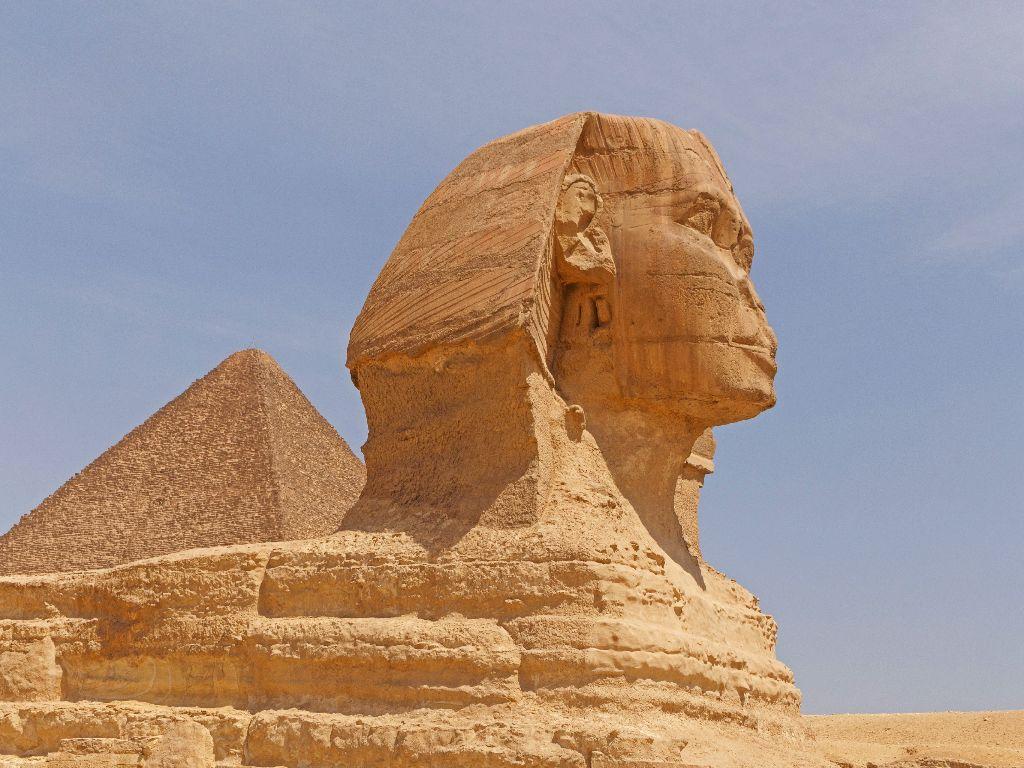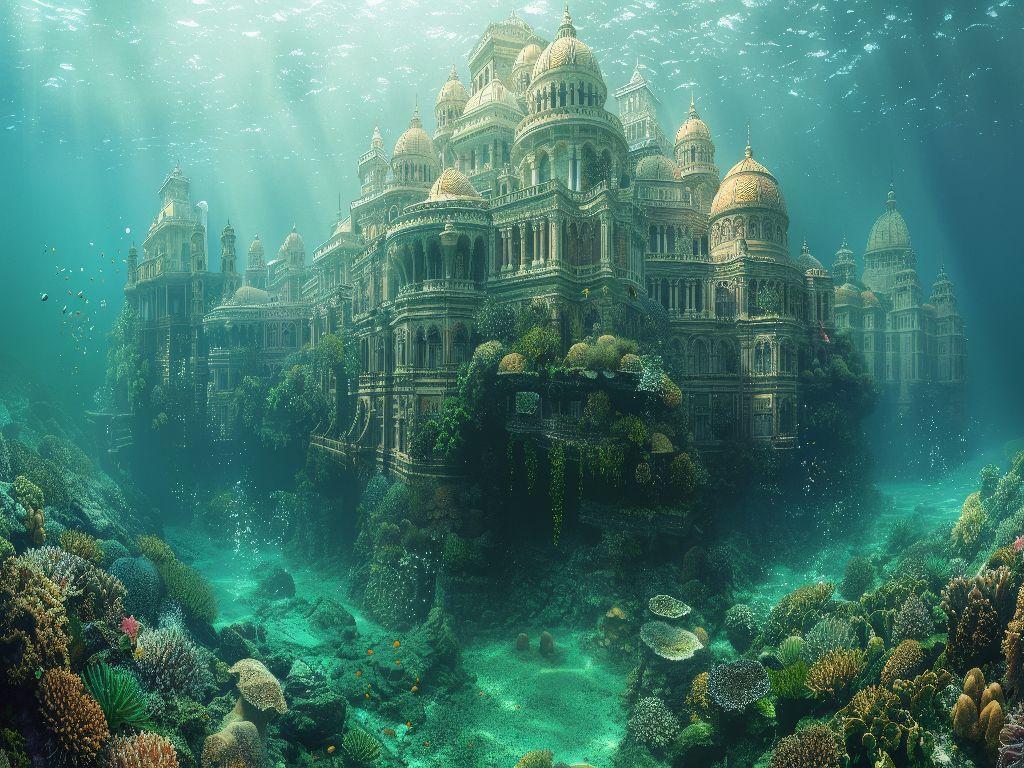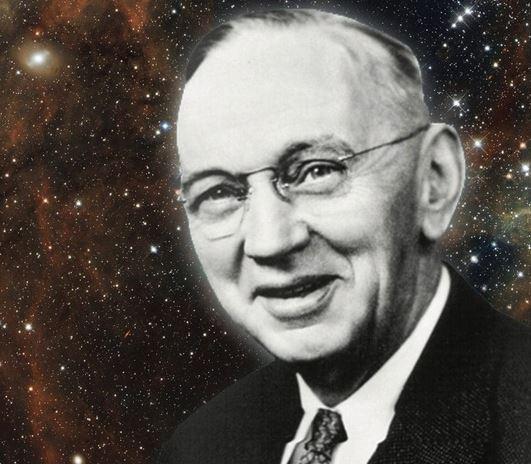Explore the Iconic Sphinx in Egypt
The Sphinx is one of Egypt's most fascinating landmarks, captivating the imagination of tourists and historians alike with its enigmatic presence on the Giza Plateau.
This ancient monument has been a subject of intrigue for centuries, with its rich history and mythology drawing visitors from around the world. As we delve into the story of this iconic structure, we uncover the layers of mystery that surround it.
Key Takeaways
- The Sphinx is a significant historical landmark in Egypt.
- It is located on the Giza Plateau, a site of great archaeological importance.
- The monument is shrouded in mystery, with its origins and purpose still debated among historians.
- Visiting the Sphinx is a highlight for many travelers to Egypt.
- The Sphinx continues to captivate the imagination of people worldwide.
The Ancient Guardian of Giza
For centuries, the Sphinx has watched over the Giza Plateau, embodying the mystique of ancient Egypt. This iconic structure is not only a marvel of ancient engineering but also a significant mythological creature that has captured the imagination of people around the world.
The Sphinx's Strategic Location
The Sphinx is situated in a strategic location on the Giza Plateau, near the Pyramid of Khafre. This placement is not coincidental; it is believed that the Sphinx was constructed to guard the pyramid complex and the necropolis. The Sphinx's location allows it to serve as a symbolic guardian, watching over the sacred grounds.
As noted by historian Mark Lehner, "The Sphinx is oriented towards the rising sun, symbolizing the eternal cycle of life and death." This orientation highlights the Sphinx's role in ancient Egyptian religious beliefs.
Relationship to the Great Pyramids
The Sphinx is closely associated with the Great Pyramids of Giza, particularly the Pyramid of Khafre. The proximity of the Sphinx to these pyramids underscores its connection to the funerary complex. It is thought that the Sphinx was built during the Old Kingdom period, around the same time as the pyramids.
| Pyramid | Pharaoh | Approximate Construction Date |
| Great Pyramid of Giza | Khufu | c. 2580 BC |
| Pyramid of Khafre | Khafre | c. 2520 BC |
| Pyramid of Menkaure | Menkaure | c. 2490 BC |
The Sphinx's presence near these monumental structures reinforces its significance as an ancient Egyptian monument and a guardian of the necropolis.
The Sphinx: History's Most Famous Mythological Creature
With its majestic presence on the Giza plateau, the Sphinx is an enduring symbol of ancient Egyptian culture. The Sphinx is not only an architectural marvel but also a creature of rich mythological significance.
Origins of Sphinx Imagery
The imagery of the Sphinx has its roots in ancient mythology, where creatures with mixed animal and human features were common. The Sphinx, with its lion body and human head, symbolizes strength and wisdom. This combination was significant in ancient Egyptian culture, representing the power of the pharaohs.
Physical Dimensions and Scale
The Sphinx is an impressive structure, measuring 240 feet long and 66 feet high. Its massive scale is awe-inspiring, making it one of the largest monolithic statues in the world. To put its size into perspective, consider the following dimensions:
| Dimension | Measurement |
| Length | 240 feet |
| Height | 66 feet |
| Width | 62 feet |
Construction Materials and Techniques
The Sphinx was carved out of a single block of limestone, showcasing the advanced engineering skills of the ancient Egyptians. The construction techniques used were sophisticated for the time, involving the removal of stone to create the desired form.
The use of limestone, a readily available material at Giza, facilitated the construction of this monumental structure. The Sphinx's proximity to the Great Pyramid highlights the cultural and historical connection between these two iconic structures.
Historical Origins and Dating Controversies
The Great Sphinx of Giza stands as a testament to ancient Egypt's architectural prowess, yet its exact origins remain shrouded in mystery. This iconic monument has been a subject of fascination for centuries, with its historical context and dating being a topic of much debate among scholars.
Traditional Egyptology Timeline
Traditional Egyptology attributes the construction of the Sphinx to the Old Kingdom period, specifically during the reign of Pharaoh Khafre (2520-2494 BC). This timeline is based on the similarity in style between the Sphinx and the pyramids built during that era. The Sphinx is seen as a guardian of the necropolis, watching over the tombs of the pharaohs.
Pharaoh Khafre's Connection
Pharaoh Khafre's connection to the Sphinx is supported by the presence of his pyramid and other monuments in the vicinity. The face of the Sphinx is believed to be a likeness of Khafre, further solidifying the link. Egyptologists point to the Dream Stele, erected by Thutmose IV, as evidence that the Sphinx was already in existence during the New Kingdom period, though it was likely built earlier.
Alternative Dating Theories
Despite the traditional timeline, alternative dating theories propose that the Sphinx could be much older, potentially dating back to a pre-dynastic era. Some researchers suggest that the Sphinx shows signs of water erosion, which could indicate that it was built during a time when the climate in Egypt was different, thousands of years earlier than traditionally believed. These theories, while intriguing, remain a topic of controversy within the field of egyptology, adding to the mystery surrounding the Sphinx.
The debate over the Sphinx's age highlights the complexity of understanding ancient monuments. While traditional Egyptology provides a well-established framework, alternative theories keep the discussion alive, ensuring that the Sphinx remains a fascinating subject of study.
Architectural Features of the Ancient Monument
The Sphinx, an iconic historical site, boasts a unique blend of architectural elements that have fascinated visitors for centuries. As a monumental structure, it showcases the advanced engineering and artistic skills of the ancient Egyptians.
The Lion's Body and Human Face
The Sphinx is characterized by its hybrid design, combining the body of a lion with the face of a human. This unique blend is thought to represent the power and wisdom of the pharaohs. The lion's body symbolizes strength and protection, while the human face is believed to be a likeness of Pharaoh Khafre.
Original Appearance and Coloration
The Sphinx was originally painted in vibrant colors, with evidence suggesting that it was red, yellow, and blue. The pigments used were likely derived from natural sources, such as minerals and plants. Over time, the colors have faded, leaving the Sphinx with its current weathered appearance.
Comparison to Other Ancient Structures
The Sphinx shares similarities with other ancient Egyptian structures, such as the pyramids and temples. Its unique blend of architectural elements is also comparable to other ancient monuments, like the Great Pyramids of Giza. The Sphinx's design reflects the cultural and symbolic significance of these structures in ancient Egyptian society.
Unsolved Mysteries of the Sphinx
The Great Sphinx of Giza, a marvel of ancient engineering, remains shrouded in mystery despite extensive study. As a major tourist attraction and archaeological site, it continues to captivate visitors and researchers alike with its enigmas.
The Missing Nose: Separating Fact from Fiction
One of the most enduring mysteries surrounding the Sphinx is the loss of its nose. Various theories have been proposed, ranging from iconoclastic destruction to natural erosion. According to historical accounts, the nose was intact during the 14th century but was later destroyed.
As
"The face of the Sphinx is mutilated, and the nose is gone."
noted by historian Al-Maqrīzī in the 15th century, highlighting the timeline of this vandalism. The exact perpetrator remains unknown, leaving room for speculation.
Theories About Hidden Chambers
Many researchers believe that the Sphinx may contain hidden chambers or tunnels, potentially linking it to other structures on the Giza plateau. Advanced technologies like seismic surveys and thermal imaging have been employed to detect these alleged cavities.
While some studies suggest the presence of anomalies beneath the Sphinx, the evidence remains inconclusive. As an archaeological site, the Sphinx offers a rich field for investigation, with each new discovery potentially shedding light on its secrets.
Water Erosion Controversy
The Sphinx shows signs of significant water erosion, sparking debate about its age and the environmental conditions it has faced. Some researchers argue that the erosion patterns indicate the Sphinx was built during a period when the climate was much wetter than it is today.
This theory challenges traditional Egyptology timelines and suggests that the Sphinx could be much older than commonly believed. As tourism and research continue at the site, new insights may help resolve this controversy.
Religious and Cultural Significance in Ancient Egypt
The Great Sphinx of Giza holds a significant place in the religious and cultural heritage of ancient Egypt. As an ancient Egyptian monument, it has been a subject of fascination and reverence for centuries. Its presence on the Giza Plateau is not merely as a statue but as a guardian that embodies the spiritual and mythological beliefs of the time.
Role in Egyptian Mythology
The Sphinx played a crucial role in Egyptian mythology, often symbolizing the power and wisdom of the gods. It was believed to possess divine knowledge and was associated with the sun god Ra, embodying the strength and mystery of ancient Egyptian religious beliefs. The mythological significance of the Sphinx was further underscored by its depiction in various ancient texts and artworks, highlighting its importance in the spiritual narrative of ancient Egypt.
Symbolic Protection of the Giza Plateau
As a guardian figure, the Sphinx was seen as a protector of the Giza Plateau, watching over the tombs and temples in the area. Its presence was believed to ward off evil spirits and to safeguard the necropolis. The symbolic protection offered by the Sphinx was integral to the funerary practices and beliefs of the ancient Egyptians, who saw the Sphinx as a bridge between the mortal world and the afterlife.
The cultural significance of the Sphinx extends beyond its religious role, influencing art, architecture, and literature throughout history. Its image has been used in various contexts, symbolizing wisdom, strength, and mystery. The enduring legacy of the Sphinx as an ancient Egyptian monument continues to captivate audiences worldwide, making it an integral part of our shared cultural heritage.
Major Archaeological Discoveries at the Giza Complex
The Sphinx, a prominent mythological creature, has been at the center of archaeological investigations at Giza, revealing new secrets about ancient Egypt. The Giza Complex, home to the Sphinx and the Pyramids, continues to be a site of great archaeological interest.
Historical Excavations and Findings
Historical excavations at Giza have uncovered various artifacts and structures that provide insight into the construction and significance of the Sphinx. Early excavations were often rudimentary, but they laid the groundwork for modern archaeological techniques. Some notable findings include:
- Evidence of ancient tool marks on the Sphinx and surrounding structures
- Discovery of temples and tombs near the Sphinx
- Uncovering of the Sphinx's original dimensions and appearance
The Dream Stele Between the Paws
One significant discovery is the Dream Stele, located between the paws of the Sphinx. This stele provides valuable historical context, detailing the restoration efforts undertaken by Pharaoh Thutmose IV. The stele is an important artifact that sheds light on the Sphinx's significance in ancient Egyptian culture.
Modern Archaeological Technologies at Work
Modern archaeological technologies have revolutionized the field, allowing for more precise and non-invasive investigations. Techniques such as ground-penetrating radar and 3D scanning have been employed at Giza to uncover hidden structures and analyze the Sphinx without causing damage. These technologies have enhanced our understanding of the Sphinx and its surroundings, revealing new details about its construction and history.
Conservation Challenges at the Historical Site
The Great Sphinx of Giza, a marvel of ancient engineering, is currently battling environmental and human-induced challenges. As a significant part of Egypt's cultural heritage and a major tourist attraction near the Great Pyramid, its preservation is of utmost importance.
Environmental Threats and Erosion
The Sphinx faces significant environmental challenges, including erosion caused by wind, sand, and groundwater. These factors contribute to the deterioration of the limestone structure, weakening its foundation. Egyptologists and conservators are working together to mitigate these effects through various conservation techniques.
Impact of Tourism on Preservation
While tourism is a vital part of Egypt's economy, it also poses a significant threat to the Sphinx and the Giza Complex. The large number of visitors can lead to soil compaction, pollution, and damage to the monument. Efforts to manage tourism sustainably are underway to balance economic benefits with preservation needs.
Current and Future Restoration Projects
Several restoration projects are currently underway to address the challenges faced by the Sphinx. These include cleaning and consolidating the limestone, improving drainage systems, and implementing measures to reduce the impact of tourism. Future projects aim to leverage advanced technologies in egyptology to monitor the Sphinx's condition and develop more effective conservation strategies.
By addressing these challenges, we can ensure the long-term preservation of the Sphinx for future generations. The collaboration between local authorities, international organizations, and the public is crucial in this endeavor.
Visiting the Sphinx: A Tourist's Guide
As one of the world's most recognizable historical sites, the Sphinx in Giza offers an unforgettable experience for tourists. Planning your visit to this ancient wonder can enhance your overall experience.
Practical Information for Travelers
When visiting the Sphinx, it's essential to be prepared. The site is open daily from 7 am to 5 pm, with an entrance fee that grants access to the Giza Plateau, including the Pyramids. Tickets can be purchased online or at the ticket office. Visitors are advised to wear comfortable shoes and bring sun protection, as the site offers little shade.
Best Times to Visit the Archaeological Site
The best time to visit the Sphinx is early in the morning or late in the afternoon to avoid the peak sun hours. Visiting during the shoulder season (April-May or September-October) can also help avoid the crowds that come during the peak tourist season. Additionally, consider a guided tour to gain deeper insights into the history and mystery surrounding the Sphinx.
| Time of Day | Crowd Level | Recommended For |
| Early Morning | Low | Photography, serene experience |
| Midday | High | Those with limited time, group tours |
| Late Afternoon | Medium | Cooler weather, fewer crowds |
Nearby Attractions in Giza
The Giza Plateau is home to several other attractions, including the Great Pyramids of Giza and the Solar Boat Museum. Visitors can also explore the surrounding area, which offers stunning views of the Cairo skyline. For those interested in delving deeper into Egypt's history, the Saqqara and Dahshur necropolises are worth a visit.
The Sphinx in Modern Popular Culture
The Great Sphinx of Giza has transcended its historical significance, becoming a staple in modern popular culture. As an iconic symbol of ancient Egypt, it continues to inspire artists, writers, and filmmakers around the world.
Representations in Film and Literature
The Sphinx has been featured in numerous films and literary works, often symbolizing mystery and ancient wisdom. For instance, it has appeared in movies like "The Mummy" and "Transformers: Revenge of the Fallen," as well as in literature, such as in the works of authors like Edgar Allan Poe and Antoine de Saint-Exupéry. These representations not only reflect the Sphinx's cultural significance but also contribute to its enduring appeal as a tourist attraction and archaeological site.
Influence on Art, Architecture, and Design
Beyond film and literature, the Sphinx has influenced various art forms, including visual arts, architecture, and design. Its majestic presence has inspired countless artists, from painters to sculptors, and its image has been used in architectural designs and decorative motifs. The Sphinx's intriguing blend of human and lion features makes it a compelling subject for creative expression, further cementing its place in modern popular culture.
As a cultural icon, the Sphinx continues to captivate audiences worldwide, drawing tourists to the archaeological site and inspiring new generations of artists, writers, and filmmakers. Its presence in modern media not only reflects its historical and cultural significance but also ensures its continued relevance in contemporary culture.
Conclusion: The Enduring Legacy of Egypt's Ancient Guardian
The Sphinx remains an enigmatic figure, captivating global audiences with its mystique. As the ancient guardian of Giza, it continues to inspire wonder and curiosity. Its historical significance is undeniable, representing a connection to the rich cultural heritage of ancient Egypt.
The Sphinx's influence extends beyond its historical context, permeating modern popular culture through various forms of art, literature, and film. Its image has been used symbolically, often representing mystery and ancient wisdom. The Sphinx at Giza continues to be a source of fascination, drawing visitors from around the world to marvel at its grandeur.
As a cultural icon, the Sphinx will continue to endure, symbolizing the timeless appeal of ancient Egypt's architectural and cultural achievements. Its legacy is a testament to the ingenuity and craftsmanship of the civilization that created it, ensuring its place in history for generations to come.
FAQ
What is the Sphinx, and where is it located?
What is the significance of the Sphinx's location?
What are the physical dimensions of the Sphinx?
Who built the Sphinx, and when?
What is the significance of the Sphinx in ancient Egyptian mythology?
What are some of the unsolved mysteries surrounding the Sphinx?
How has the Sphinx been represented in modern popular culture?
What are the conservation challenges facing the Sphinx and the Giza Complex?
How can tourists visit the Sphinx, and what are the best times to visit?
What is the current state of archaeological research at the Giza Complex?
Links:






